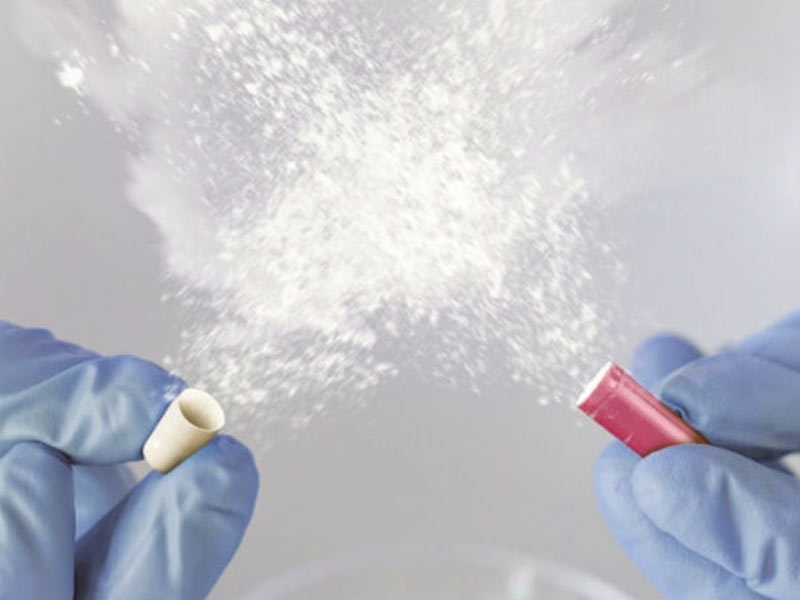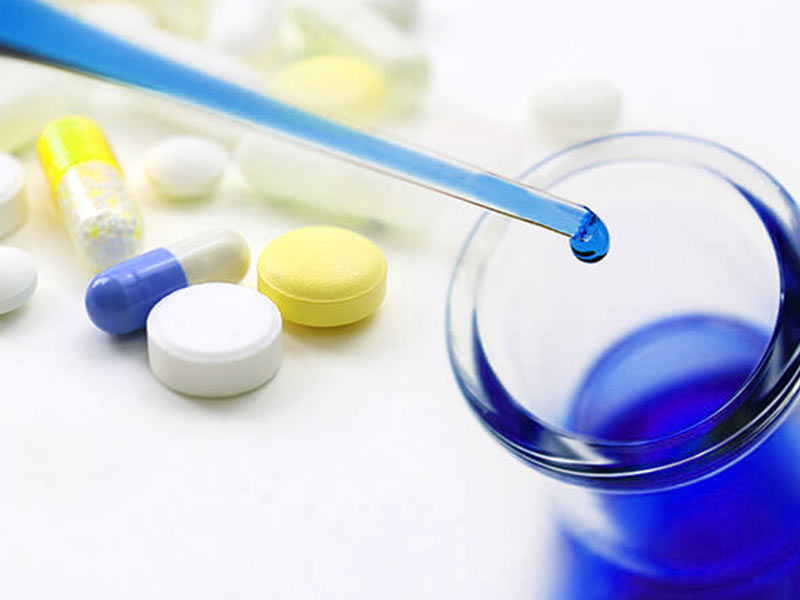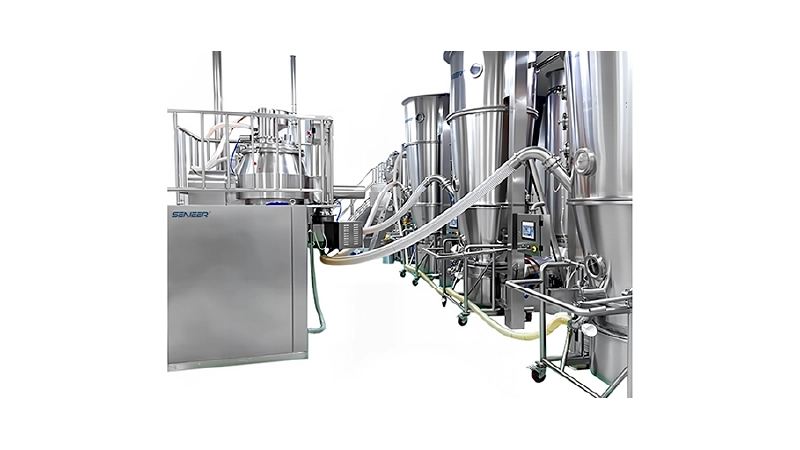APIs are active ingredients that play a pharmacological role in pharmaceuticals. APIs and excipients together constitute clinically applied pharmaceutical preparations. China implements a registration approval system for APIs, which stipulates that APIs should be produced and marketed after preclinical research and clinical studies together with preparations to confirm their safety and effectiveness.
China is a major producer of chemical RAW materials and pharmaceutical intermediates, but compared with countries with developed pharmaceutical industries, there is a certain gap in both the level of production technology and the concept of research and development.
In 2005, China’s State Food and Drug Administration organized relevant personnel to formulate and issue the “Technical Guidelines for the Preparation and Structural Confirmation Of Chemical Drug APIs”, hoping to establish the general principles and technical requirements for API research and registration declaration , and promote the production process level and research and development concept of Chinese APIs to gradually integrate with developed countries. At present, the guiding principles have played a good role in promoting, but there are still some understandings in the research and evaluation of APIs that need further clarification, such as researchers still have doubts about what research information should be submitted in the declaration materials and why they should be submitted. This article discusses some of the issues found in the REGISTRATION DECLARATION OF APIs.
According to the content of the guiding principles, this paper mainly analyzes and interprets the three parts: overview, general process of preparation process research, and general content of preparation process research.
1 Overview
The overview section describes the purpose and significance of the drafting of these Guiding Principles, the scope of application, and so on. These Guiding Principles represent some of the current understandings of the drug registration and evaluation agency on the research of the preparation process of chemical RAW Materials, but they are not mandatory requirements; Due to the complexity of specific preparatory process studies, the guiding principles may not cover the problems that may be encountered in the research process, but it provides general principles that should be followed in the preparation process research process and provides a platform for researchers and evaluators to understand each other. Therefore, the purpose of this guiding principle is to effectively improve the efficiency of drug research and drug registration by elaborating the general rules of research on the preparation process of chemical RAW Materials, so that drug developers and evaluators can reach a consensus on this issue as much as possible.
2 General process Of API Preparation Research

The general process of API preparation research is divided into six stages:
(1) Identify the target compound.
(2) Design synthetic routes.
(3) Preparation of the target compound.
(4) Structural confirmation.
(5) Process optimization.
(6) Pilot scale-up research and industrial production.
The above stages basically reflect the general process of chemical API preparation research. However, it should be noted that these stages are not carried out sequentially and consistently, but often go through many iterations and adjustments and even a process of reversal to achieve the goal. Therefore, at the initial stage of the study design, the difficulty and feasibility of the work in the subsequent stages should be assessed in order to avoid the half-way outcome as much as possible.
In addition, as far as the entire drug research process is concerned, the preparation of the API is only the beginning, and the later quality studies, safety studies and efficacy studies are likely to put forward new requirements for the preparation process. According to China’s current chemical classification system, the research process of different types of APIs also shows different characteristics.
As far as innovative drugs are concerned, the research on the preparation process of APIs shows more dynamic changes and adjustments, and even after the drug is on the market, the necessary improvements are still needed. The situation of generic drugs is different, because there are marketed drugs of the same variety, researchers can determine the final preparation process on the basis of a comprehensive quality comparison study with the listed drugs. But here’s a question of the choice of a control drug. The research foundation of listed drugs in China is weak, and the phenomenon of uneven quality is more prominent; When selecting a control drug, the researcher of the generic drug should take the initiative to study and analyze the quality of the listed drug, and select the marketed drug with strict quality control and good clinical evaluation as the control drug; Where possible, imported original research drugs should be preferred. The 3 types of new drugs in the registration management measures are a relatively special situation, strictly speaking, the pharmaceutical development of 3 new drugs is a generalized imitation behavior, but China Domestic developers often cannot obtain marketed control drugs, and cannot determine the preparation process of drugs on the basis of quality comparison studies, so the research process of 3 types of new drugs has more characteristics of new drug research. According to the inherent requirements of drug technical evaluation, in the case of not being able to obtain a control drug for comprehensive quality comparative studies, and there is no reliable reference, the 3 new drugs should carry out pharmaceutical research in accordance with the idea of innovative drugs. Especially in the determination of the process route and the control of process impurities, there should be safety experiment information to give full support. However, in some cases, compared with the safety study of APIs, the impurity level is reduced by improving the preparation process and making it conform to the “Technical Guidelines for the Study of Impurities in Chemical Drug APIs” The related requirements may be an easier option.
3 The Basic Content Of API Preparation Research
According to the general process of API preparation process research, this part of the content expounds all aspects of the API preparation process, from the laboratory stage to the industrial production stage, and emphasizes the importance of process control.
3.1 Selection Of Processes
The process of design, selection and implementation of a process is the process of assigning attributes to product quality. As far as chemical APIs are concerned, the choice of process is mainly the choice of chemical reactions and the selection of separation and purification methods. Organic synthetic chemistry has developed to this day as a very mature discipline, and almost any structural molecule can be prepared by specific reactions. Therefore, whether the response is no longer the main problem, the problem is the selectivity of the reaction! The selectivity of organic reactions has always been the biggest problem for synthetic chemists, and some chemists have even called it an eternal problem. From this point of view, the basic principle of process selection is very simple: a good selective reaction is a good reaction, and a simple separation and purification method is a good method!

However, the actual process choice can be a very complex issue. Because in addition, it is also necessary to consider the availability of raw materials and reagents, the possibility of achieving large-scale production, the cost of production equipment, materials, personnel and quality control, environmental protection, labor protection, intellectual property rights, and so on. The complexity of the influencing factors makes the choice of process a very individual issue. The choice made after considering various factors may not be the most reasonable scientifically, but a basic requirement is that it must be able to produce APIs that meet the quality requirements of the preparation, and ensure the stability and reproducibility of the process.
3.2 Requirements For Starting Materials And Reagents
The preparation of chemical APIs begins with some commercial raw materials and reagents of relatively low purity. Under normal circumstances, the starting materials and reagents in the preparation process should have a clear molecular formula, chemical structure and chemical name, and their physical and chemical properties and impurity profiles should have published literature as a reference, and relevant references should be provided when declaring registration. If relevant research literature cannot be provided, it should be treated as a completely new compound, and a comprehensive study of its process, structure, impurities and stability should be carried out, and the necessary process control methods and endpoint inspection standards should be established Relevant research materials should be provided together with other filing materials.
A more prominent problem recently comes from supplementary applications to shorten the API preparation process. Like other pharmaceutical issues, this issue should be considered under the broad principles of safety, effectiveness and quality control. The basis for the rationality of the process change comes from the comparative research results of the APIs before and after the change, and the change is a reasonable change under the premise of ensuring the homogeneity of the product, which includes the consistency of the principal components, the consistency of the impurity distribution, and the solid form (such as crystal form, particle size/specific surface area). Consistency, etc., merely meeting the requirements of quality standards is often not enough to confirm the quality consistency of the two.
Sometimes, the impact of solvents on the preparation process and product quality is more serious than we think, especially the change of the refined solvent of the API, which may have a direct impact on the solid form of the raw material. Since the solid form of the API (crystal form, particle size/specific surface area, solvation) is directly related to its dissolution rate and the release, dissolution rate, bioavailability of the preparation, therefore, Changes in solvents may lead to changes in the effectiveness and even safety of drugs (such as drugs with stronger activity and narrower safety windows). For hard-to-dissolve APIs, this problem is usually more pronounced if the formulation is a solid formulation (or suspension).
3.3 Process Control And Intermediate Requirements For The Preparation Process
In the initial stage of preparation process research, each step is usually carefully examined, and each intermediate is characterized by either simple or complex; With the increase of research experience and the accumulation of process data, key reactions and key intermediates in the process gradually surface. At the declaration and registration stage, the quality standards for the key points of process control, key intermediates and final products should have been established. It should be emphasized that it is often difficult to control the quality and purity of APIs by relying solely on the end point inspection of production, while at the same time properly controlling the production process. From the perspective of ensuring the quality of drugs and reducing the level of impurities, it is necessary to control the preparation process from at least the following aspects:

(1) Properly control the quality and purity of starting materials, reactants and reagents.
(2) Establish a control method for intermediates.
(3) Verify the production process and strictly implement the verified production process.
(4) Sufficient end-point release control of APIs.
For this reason, the declaration of registration should be a comprehensive description of the production process and process control methods, which should be done for at least two reasons:
First, a comprehensive understanding of the synthesis process helps to elucidate the chemical structure of the APIs, the chemical structure and binding of the starting materials and various reactants can provide valuable additional information for the confirmation of the structure of the final product. For example, the stereo configuration of an API may be related to a starting material, or introduced through a split or stereoselective reaction, and a comprehensive knowledge and understanding of the synthesis process can help us judge that possibility is correct. Due to the lack of popularity of instruments to confirm the absolute configuration of molecules, some registration applications basically do not study the absolute configuration of APIs containing chiral centers. But in fact, through the analysis of synthetic routes, coupled with conventional spectral research methods, it is often possible to infer the stereo configuration of the target molecule to a large extent.
Second, different preparation processes will produce different impurities (including actual detected impurities and potential impurities), and may lead to changes in the morphology of solid APIs (such as crystalline form, amorphous, solvated molecules, particle size/specific surface area, etc.). )。 Changes in impurity distribution can raise safety and efficacy concerns. Process control of the preparation process and end-of-line control of APIs allows us to monitor changes in impurity levels during the production process. Especially when the production process changes, the proportion of impurities and even the type of impurities may change, at this time, the impurity inspection method also needs to be adjusted accordingly.
In the preparation process, the reaction closer to the final product has a greater impact on the quality of the API, so the reaction near the end point and the purification process of the crude API should be described in detail. Generally should include the following: detailed preparation process and impurity profile analysis, crude yield, method of checking the purity of crude product, detailed description of refining method (e.g., commonly used recrystallization method, should include the solvent used and its ratio to crude product, whether to filter while hot, whether to use decolorizer, The cooling rate and end temperature of the solution, whether the mother liquor is reused after recovery, etc.), the yield range of the refined product, and the supporting research data that show that the refining method can effectively improve the purity of the product (such as chromatographic purity comparison before and after refining, etc.).
3.4 Accumulation Of Process Data
The accumulation of process data has at least two significances:(1) helps to judge the link between the feasibility and stability of the process and the reproducibility of product quality. (2) It is helpful to establish process control methods and endpoint inspection standards. Especially when determining the impurity limits of quality standards, process analysis data is one of the main reference bases, and other factors to consider include research data from clinical and preclinical safety study batches, data from stability studies, and the impact and limitation of examination methods. The annex to the guidelines gives a reference table for process data, including production location, time, packaging, batch size, industrial parameters, quality inspection results, yield, etc., in addition to the contents listed in the table, the purpose of the batch of samples should also be explained. In general, the impurity limits in the quality standard should not be higher than the results of the corresponding batch of impurity examinations used for clinical and preclinical safety studies.
4 Summary

The design, selection and implementation of a process is a process that gives product quality attributes. Good or bad quality is “produced by design”. Inspection is an important means to reflect product quality, but whether it is the setting of the inspection item or the inspection method itself, it can only reflect the quality attributes of some negative aspects of the product to a certain extent and selectively. The criteria for evaluating the quality of a product are determined by the use of the product, and as far as drugs are concerned, safety, effectiveness and quality controllability are always the final criteria for evaluating their quality. Therefore, in the choice of preparation process, it cannot be simply considered that as long as the PRODUCTION of APIs that meet the purity requirements can be, researchers should always put the process design, implementation and improvement process in the context of drug safety, effectiveness and quality control for comprehensive analysis and consideration.
In addition, a qualified process should be able to stably and continuously produce products that meet quality requirements, so verification work has become an indispensable part of process research. Although the technical requirements related to verification are not directly addressed in the guiding principles, the process control concept embodied in them is an important basis for process verification. Pharmaceutical production enterprises should pay full attention to the important impact of process verification on the quality stability of drugs, and strictly implement the verified production processes to reduce the risk of drug production and quality control as much as possible.










